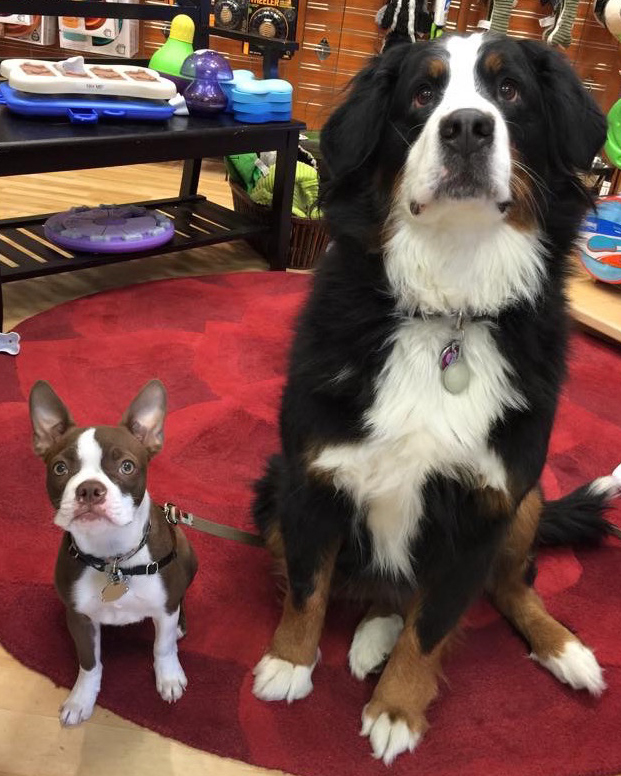Variety and rotation
 Rotating the foods that your pets eat is one of the best things that you can do for their health and well-being. Here are some of the “hows and whys” of offering your pet a variety of healthful mealtime options.
Rotating the foods that your pets eat is one of the best things that you can do for their health and well-being. Here are some of the “hows and whys” of offering your pet a variety of healthful mealtime options.
Why switch?
Just like people, cats and dogs can get bored with the same food day in and day out and truly enjoy variety. An important reason to switch foods is that it helps prevent sensitivities from developing. Cats and dogs that eat the same food for an extended period of time may become sensitive to one or more of the ingredients in their food. Varying their diet prevents the body from being overexposed to potential allergens.
Pets also develop a stronger, tougher digestive system by being exposed to many different kinds of foods, making a varied diet an effective way of preventing stomach upsets. Finally, by varying the protein sources and brands that you feed, you are providing your pet with a wider spectrum of vital nutrients like trace minerals and vitamins that keep your pets at their healthiest!
Switching your pet’s food can be an easy and positive experience. Puppies and kittens are the easiest to transition, as their digestive systems are more adaptable. To start your puppy or kitten off right, introduce a variety of different types, flavors, and textures of food at an early age. Older pets, especially those who have been on the same food for an extended period of time, may need a little more time to adjust to their new food. Make a gradual switch to a new food by starting with 10–20% new food and increasing the amount over four to seven days.
Digestive aids such as Wisley Good Digestion or probiotics like acidophilus can aid in the digestion of new foods. After a few months of switching gradually, your pet’s digestive system will toughen up and you will be able to decrease or even eliminate the transition period altogether.
4 Basic Kinds of Food
Dry Kibble:
Cost-effective, convenient to feed, easy to store
Nutrient-dense, palatable, high in moisture, helps overweight pets shed excess weight
Frozen Raw:
Closest to the ancestral diet, healthiest option, cleans teeth, offers natural enzymes
High in meat protein, works great as a topper, mix-in, or treat, less messy than raw
Transitioning Dogs
Dogs usually take to raw food very quickly—just be sure to adjust the feeding amount and phase it in gradually since it is so much more nutrient-dense than cooked foods.
Transitioning cats
While dogs often transition easily from dry food to canned or raw foods, it can be trickier for cats to switch if they are used to a dry-only diet. For a smooth transition:
- Try many different flavors and textures of canned cat food
- Offer twice-daily feeding and remove dry food when the wet is offered
- Try crumbling familiar kibbles onto the canned food to entice your cat to try it
- Put some delicious toppings on the canned food like bonito flakes, salmon oil, freeze-dried chicken or meat or chicken bits
- Be patient! It takes some cats weeks or even months, but they will come around eventually.
To introduce raw food to your cat, try mixing it into a favorite canned food, offer it alongside canned food, or ask one of our pet care specialists to recommend an extra-palatable raw food. The crunchiness of freeze-dried cat food can be a great way to get fussy cats used to raw food as well. You can also add some warm water to bring the raw to room temperature.
By introducing your pet to a variety of foods, you are helping to make sure that they’re getting the most nutritious and well-rounded diet possible for a longer, happier life!
